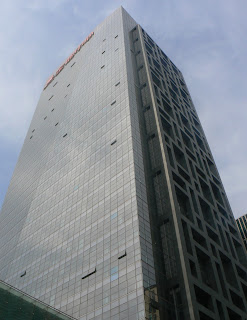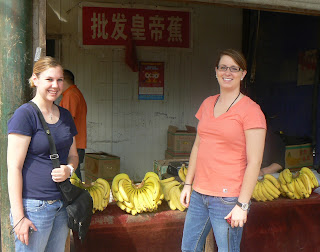May 18th,
2013
We started
our Saturday by visiting the Tian'men Square located in the center of
Beijing. 500,000 tourists visit this
area daily, or 15 million a year. The
area of the square amounts to 110 acres.
The China National Museum, China's People’s Congress Building, Mau's
Mausoleum, and the Gate to the Forbidden City surround the square. Tian'men to the Chinese means the Heavenly
Peaceful Gate.
We then
ventured into the Forbidden City. It
was built in the Ming Dynasty starting in 1420 AD and took 30 years until
completion. We were constantly getting
bombarded by the local people wanting to get pictures with the westerners. The Forbidden City has 8,764 rooms and covers
over 200 acres. 12,864 dragon statues
are located within the enclosed walls.
Only 3/5 of it is open to the public.
It was full of beautiful sites and ancient architecture. Many decorative relics and treasures are
located in the original sleeping chambers of the Emperor and Empress. The walk through popular tourist attraction
took us almost an hour.
Following
the Forbidden City we all boarded 2-person rickshaws manned by Chinese men on
bicycles. The route took us through the
Hu-Tong Village along the Rare Lake River.
The area was a quiet and pleasant change from the busier car filled
roads. Our destination was a local
family’s residence where they served us a traditional Chinese meal. It was refreshing and filling.
After our
meal we visited the Olympic Village where the 2008 Olympic Games took
place. The main visual attractions were
the Birds Nest and the Water Cube. It is
still a very popular tourist destination for both Chinese and international
travelers.
We students
were then able to practice our bargaining skills again as we went to the Pearl,
Toy, and Jewelry Markets. After spending
most of our remaining Yuan we were ready for FOOD. We fulfilled this need by going to a Hot Pot
supper. Each of us had a pot of boiling
broth with spices, meat, and vegetables at our disposal to cook in the pot and
eat! It is the equivalent to American
'fondue'.
It was a
very informative and eventful final day in China as tomorrow morning we will
depart for the homeland. Peace out.
Bird nest
Forbidden City
Tianamen Square


















































